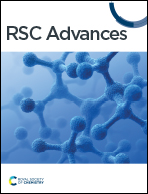A DFT approach to correlate the physical characteristics of novel chalcopyrites ASbN2(A = Li, Na) for green technology
Abstract
Semiconductor chalcopyrite compounds have been a subject of research interest due to their diverse range of physical properties that have captured the attention of scientists. In this ongoing research, we have examined the physical characteristics of LiSbN2 and NaSbN2 chalcopyrites using DFT. The modified Becke–Johnson (mBJ) potential is utilized for the computation of electronic structures. The stability is attained with negative formation energies and optimization curves. A bandgap of 2.60 eV in LiSbN2 and 3.15 eV in NaSbN2 has been achieved, which is further endorsed by the density of states. An in-depth analysis of the optical properties unveils the potential utility of LiSbN2 and NaSbN2 in various photovoltaic devices, attributed to its pronounced absorption in the UV spectrum. The transport characteristics are also assessed through various transport characteristics. The large electrical conductivity and ZT values for both chalcopyrite compounds are attained. Due to their remarkable capability to convert heat into electricity, these materials display potential for use in thermoelectric devices.



 Please wait while we load your content...
Please wait while we load your content...